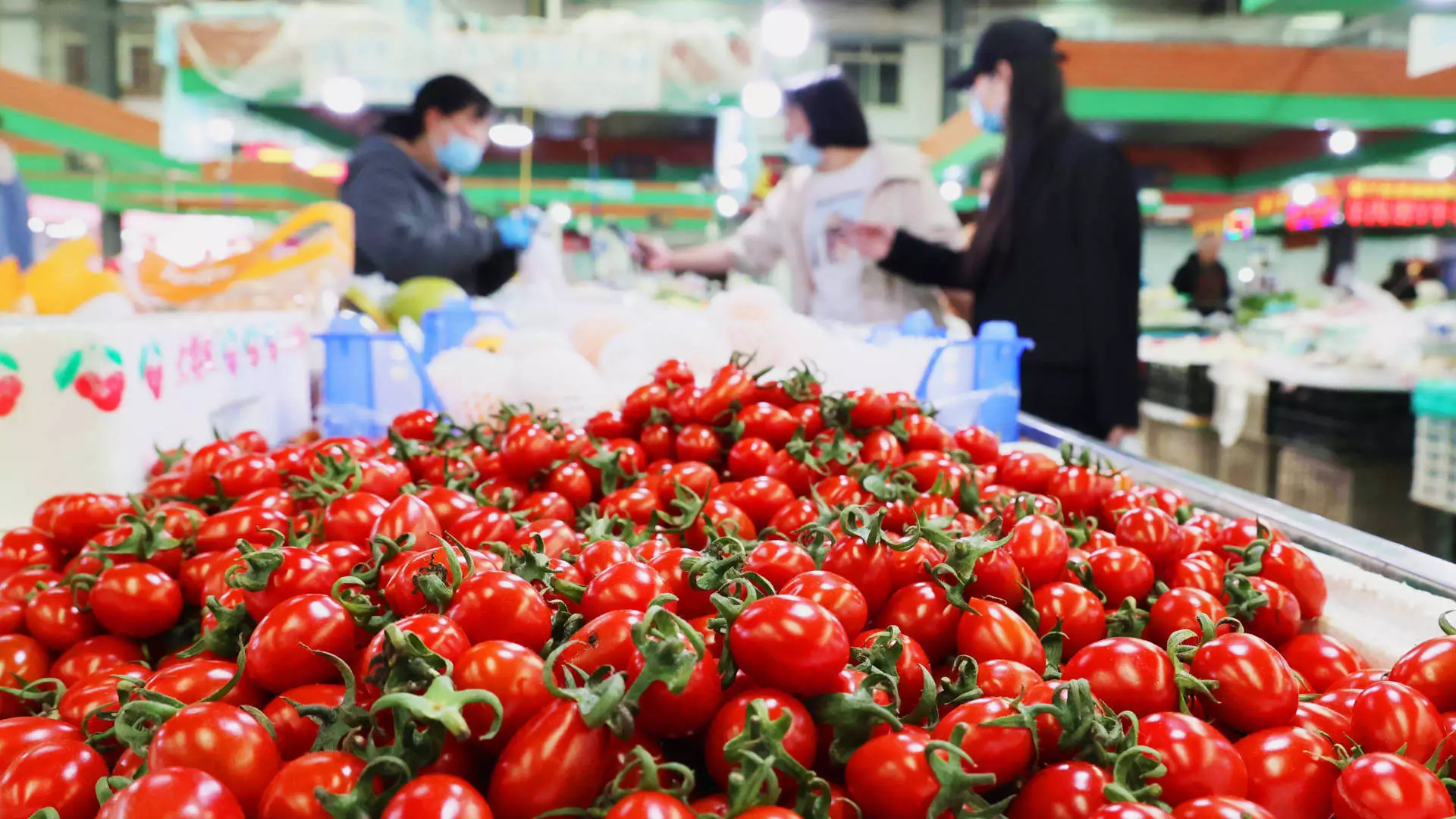In October, China’s consumer prices exhibited the slowest growth in four months, as inflation figures indicated a modest rise of 0.3% year-on-year. This figure marks a decline from the previous month’s 0.4%, illustrating the ongoing struggle within the consumer sector to regain momentum. Analysts had anticipated a stronger performance, predicting a 0.4% increase, yet the reality reflects a more tempered pace of recovery. The data, released by the National Bureau of Statistics, indicates that despite some signs of stabilizing economic activity post-pandemic, the economic recovery remains fragile and tepid.
The situation paints a complex picture—while the consumer price index (CPI) reflects a lackluster performance, core inflation, which excludes more volatile categories like food and energy, showed a slight uptick, increasing to 0.2% from September’s 0.1%. This disparity suggests that the overall inflationary pressures may be easing, though essential consumer goods continue to rise at a slower rate, raising questions about consumer spending behaviors.
Government Stimulus Measures: Expectations vs. Reality
In a bid to rejuvenate the faltering economy, particularly following the extensive economic disruptions of recent years, the Chinese government has enacted a massive 10 trillion yuan ($1.4 trillion) stimulus package. However, this package has sparked disappointment among investors who had anticipated a more aggressive approach. Instead of direct cash injections aimed at stimulating consumption and boosting economic output, the funds are designated to alleviate local government debts—often termed “hidden debt.”
Financial experts argue that this strategy may yield only minimal effects on immediate economic activity. Bruce Pang, chief economist at JLL, notes that the positive impacts of recent stimulus efforts are likely muted, primarily due to the timing of these measures coinciding with the Golden Week holiday in October. Pang’s analysis suggests that while CPI may trend upwards over time, the overall economic climate demands more significant intervention to foster lasting recovery.
The historical context of China’s economic landscape illustrates both the urgency and complexity of these stimuli. Recovering from the pandemic has necessitated targeted financial policies, yet the efficacy of such measures remains in question. Analysts speculate that the government’s cautious approach may be partly predicated on a desire to retain fiscal leverage until geopolitical conditions stabilize and international trade dynamics shift, particularly with the upcoming U.S. presidential election.
One of the critical factors contributing to the sluggish inflation rates is consumer sentiment. Currently, a staggering 70% of household wealth in China is tied to the beleaguered real estate market, which has witnessed a significant downturn. This overexposure to an unstable sector has led consumers to adopt a more conservative approach to spending, further exacerbating deflationary pressures within the economy.
The latest data reflects a month-on-month decline in consumer prices of 0.3%, contrasting with forecasts that predicted stagnation. Declining food prices have notably contributed to this downturn, underscoring the delicate interplay between consumer confidence and market conditions. Central bank interventions to stimulate economic growth have yet to translate into robust consumer spending, reflecting a broader hesitance among households to spend amid prevailing economic uncertainties.
Looking ahead, analysts forecast continued challenges for both consumer and producer prices in the coming year. Goldman Sachs anticipates that China’s headline consumer inflation will remain subdued, projected at around 0.8%. Meanwhile, producer prices have similarly faced contractions, reflecting a significant year-on-year drop of 2.9% in October, marking the largest decrease in nearly a year. The drop in producer prices is particularly severe in sectors heavily reliant on resource extraction and processing, signaling broader industrial challenges.
Macroeconomic researchers posit that enhanced counter-cyclical policies may pave the way for improved consumption and investment. However, skepticism persists regarding the sufficiency of current measures to stimulate substantial recovery in the near future. Navigating forward, the Chinese government is likely to face ongoing pressure to recalibrate its economic strategies to better support both consumers and producers, establishing a more resilient framework for recovery amidst a tumultuous global economic landscape.


Leave a Reply